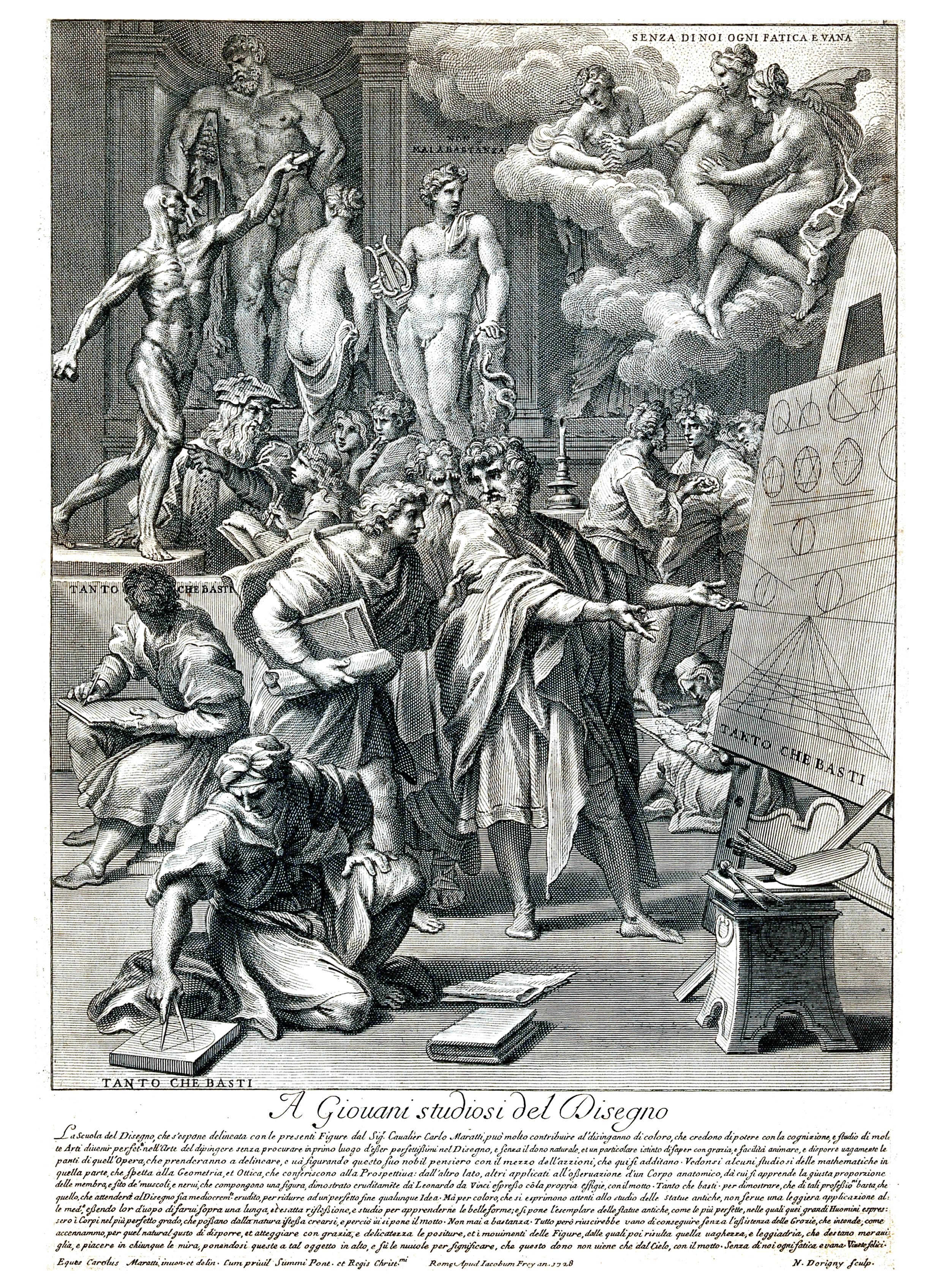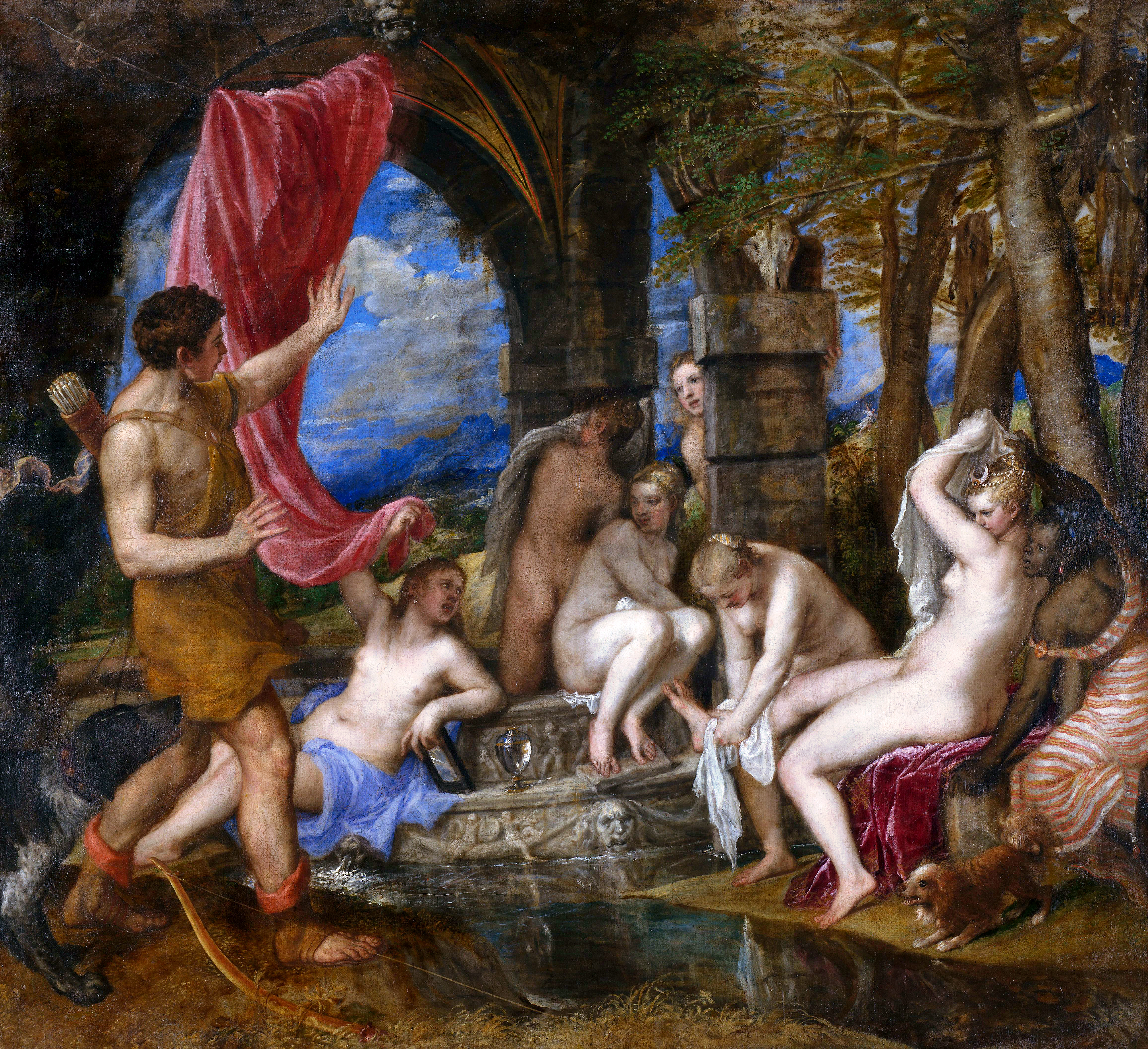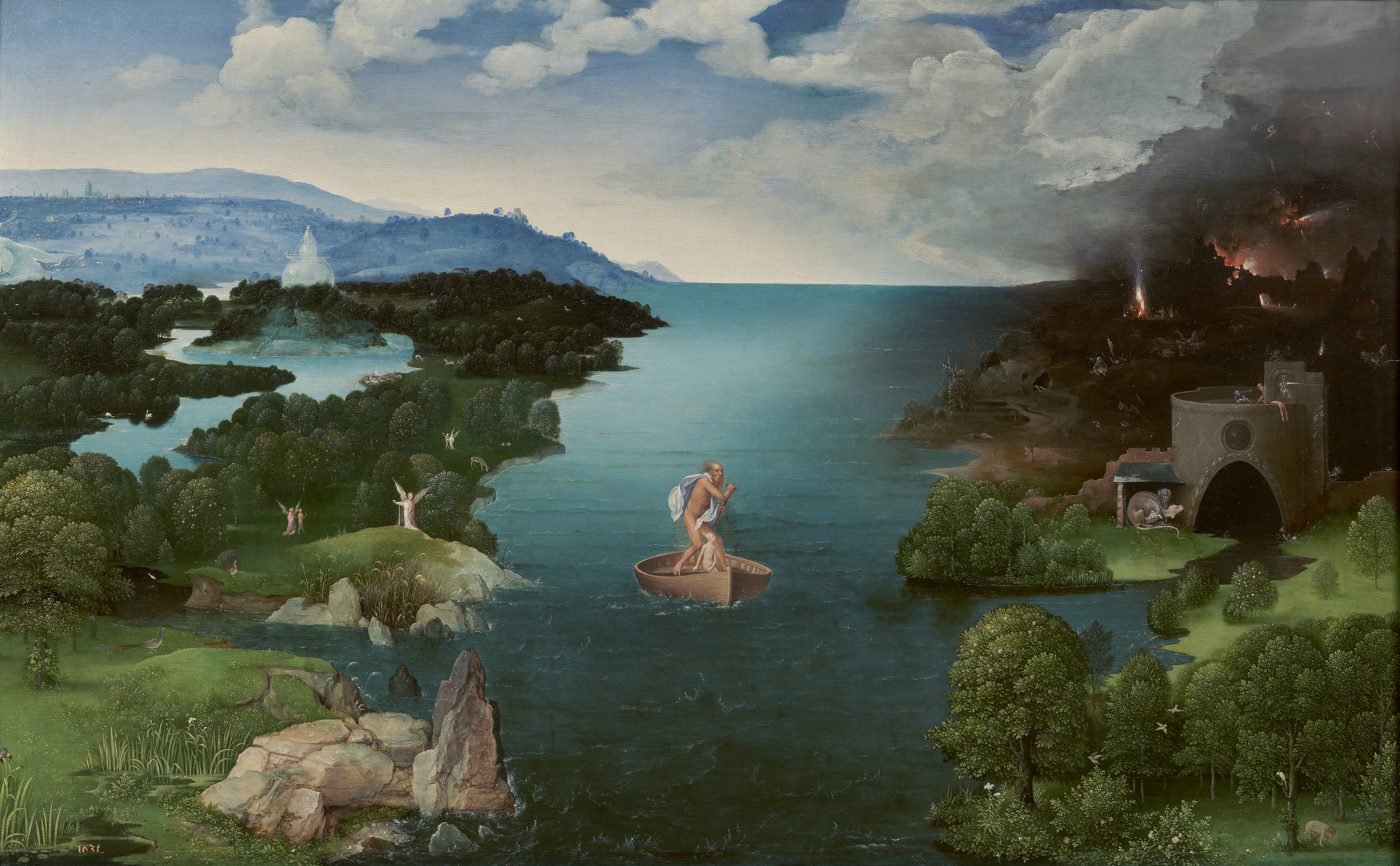|
Academic Art
Academic art, academicism, or academism, is a style of painting and sculpture produced under the influence of European academies of art. This method extended its influence throughout the Western world over several centuries, from its origins in Italy in the mid-16th century, until its dissipation in the early 20th century. It reached its apogee in the 19th century, after the end of the Napoleonic Wars in 1815. In this period, the standards of the French were very influential, combining elements of Neoclassicism and Romanticism, with Jean-Auguste-Dominique Ingres a key figure in the formation of the style in painting. The success of the French model led to the founding of countless other art academies in several countries. Later painters who tried to continue the synthesis included William-Adolphe Bouguereau, Thomas Couture, and Hans Makart among many others. In sculpture, academic art is characterized by a tendency towards monumentality, as in the works of Auguste Bartholdi and ... [...More Info...] [...Related Items...] OR: [Wikipedia] [Google] [Baidu] [Amazon] |
William-Adolphe Bouguereau
William-Adolphe Bouguereau (; 30 November 1825 – 19 August 1905) was a French Academic art, academic painter. In his realistic genre paintings, he used mythological themes, making modern interpretations of Classicism, classical subjects, with an emphasis on the female human body. During his life, he enjoyed significant popularity in France and the United States, was given numerous official honors, and received top prices for his work. As the quintessential salon painter of his generation, he was reviled by the Impressionism, Impressionist avant-garde. By the early twentieth century, Bouguereau and his art fell out of favor with the public, due in part to changing tastes. In the 1980s, a revival of interest in figure painting led to a rediscovery of Bouguereau and his work. He finished 822 known paintings, but the whereabouts of many are Lost artworks, still unknown. Life and career Formative years William-Adolphe Bouguereau was born in La Rochelle, France, on 30 November 1825, ... [...More Info...] [...Related Items...] OR: [Wikipedia] [Google] [Baidu] [Amazon] |
Guild
A guild ( ) is an association of artisans and merchants who oversee the practice of their craft/trade in a particular territory. The earliest types of guild formed as organizations of tradespeople belonging to a professional association. They sometimes depended on grants of letters patent from a monarch or other ruler to enforce the flow of trade to their self-employed members, and to retain ownership of tools and the supply of materials, but most were regulated by the local government. Guild members found guilty of cheating the public would be fined or banned from the guild. A lasting legacy of traditional guilds are the guildhalls constructed and used as guild meeting-places. Typically the key "privilege" was that only guild members were allowed to sell their goods or practice their skill within the city. There might be controls on minimum or maximum prices, hours of trading, numbers of apprentices, and many other things. Critics argued that these rules reduced Free market, fre ... [...More Info...] [...Related Items...] OR: [Wikipedia] [Google] [Baidu] [Amazon] |
History Painting
History painting is a genre in painting defined by its subject matter rather than any artistic style or specific period. History paintings depict a moment in a narrative story, most often (but not exclusively) Greek and Roman mythology and Bible stories, opposed to a specific and static subject, as in portrait, still life, and landscape painting. The term is derived from the wider senses of the word ''historia'' in Latin and ''histoire'' in French, meaning "story" or "narrative", and essentially means "story painting". Most history paintings are not of scenes from history, especially paintings from before about 1850. In modern English, "historical painting" is sometimes used to describe the painting of scenes from history in its narrower sense, especially for 19th-century art, excluding religious, mythological, and allegorical subjects, which are included in the broader term "history painting", and before the 19th century were the most common subjects for history paintings. ... [...More Info...] [...Related Items...] OR: [Wikipedia] [Google] [Baidu] [Amazon] |
Still-life
A still life (: still lifes) is a work of art depicting mostly inanimate subject matter, typically commonplace objects which are either natural (food, flowers, dead animals, plants, rocks, shells, etc.) or human-made (drinking glasses, books, vases, jewelry, coins, pipes, etc.). With origins in the Middle Ages and Ancient Greco-Roman art, still-life painting emerged as a distinct genre and professional specialization in Western painting by the late 16th century, and has remained significant since then. One advantage of the still-life artform is that it allows an artist much freedom to experiment with the arrangement of elements within a composition of a painting. Still life, as a particular genre, began with Netherlandish painting of the 16th and 17th centuries, and the English term ''still life'' derives from the Dutch word ''stilleven''. Early still-life paintings, particularly before 1700, often contained religious and allegorical symbolism relating to the objects depict ... [...More Info...] [...Related Items...] OR: [Wikipedia] [Google] [Baidu] [Amazon] |
Landscape Painting
Landscape painting, also known as landscape art, is the depiction in painting of natural scenery such as mountains, valleys, rivers, trees, and forests, especially where the main subject is a wide view—with its elements arranged into a coherent Composition (visual arts), composition. In other works, landscape backgrounds for figures can still form an important part of the work. Sky is almost always included in the view, and weather is often an element of the composition. Detailed landscapes as a distinct subject are not found in all artistic traditions, and develop when there is already a sophisticated tradition of representing other subjects. Two main traditions spring from Western painting and Chinese art, going back well over a thousand years in both cases. The recognition of a spiritual element in landscape art is present from its beginnings in East Asian art, drawing on Daoism and other philosophical traditions, but in the West only becomes explicit with Romanticism. L ... [...More Info...] [...Related Items...] OR: [Wikipedia] [Google] [Baidu] [Amazon] |
Portrait
A portrait is a painting, photograph, sculpture, or other artistic representation of a person, in which the face is always predominant. In arts, a portrait may be represented as half body and even full body. If the subject in full body better represents personality and mood, this type of presentation may be chosen. The intent is to display the likeness, personality, and even the mood of the person. For this reason, in photography a portrait is generally not a snapshot, but a composed image of a person in a still position. A portrait often shows a person looking directly at the painter or photographer, to most successfully engage the subject with the viewer, but portrait may be represented as a profile (from aside) and 3/4. History Prehistorical portraiture Plastered human skulls were reconstructed human skulls that were made in the ancient Levant between 9000 and 6000 BC in the Pre-Pottery Neolithic B period. They represent some of the oldest forms of art in the Middle ... [...More Info...] [...Related Items...] OR: [Wikipedia] [Google] [Baidu] [Amazon] |
Realism (arts)
Realism in the arts is generally the attempt to Representation (arts), represent subject-matter truthfully, without artificiality, exaggeration, or speculative fiction, speculative or supernatural elements. The term is often used interchangeably with naturalism, although these terms are not necessarily synonymous. Naturalism, as an idea relating to visual representation in Western art, seeks to depict objects with the least possible amount of distortion and is tied to the development of linear perspective and illusionism in Renaissance Europe. Realism, while predicated upon naturalistic representation and a departure from the idealization of earlier academic art, often refers to a Realism (art movement), specific art historical movement that originated in France in the aftermath of the French Revolution of 1848. With artists like Gustave Courbet capitalizing on the mundane, ugly or sordid, realism was motivated by the renewed interest in the commoner and the rise of leftist polit ... [...More Info...] [...Related Items...] OR: [Wikipedia] [Google] [Baidu] [Amazon] |
Idealism
Idealism in philosophy, also known as philosophical realism or metaphysical idealism, is the set of metaphysics, metaphysical perspectives asserting that, most fundamentally, reality is equivalent to mind, Spirit (vital essence), spirit, or consciousness; that reality is entirely a mental construct; or that ideas are the highest type of reality or have the greatest claim to being considered "real".Goldschmidt et al. 2017, p. ix. Because there are different types of idealism, it is difficult to define the term uniformly. Indian philosophy contains some of the first defenses of idealism, such as in Vedanta and in Shaivism, Shaiva Pratyabhijna, Pratyabhijña thought. These systems of thought argue for an all-pervading consciousness as the true nature and ground of reality. Idealism is also found in some streams of Mahayana Buddhism, such as in the Yogachara, Yogācāra school, which argued for a "mind-only" (''cittamatra'') philosophy on an analysis of subjective experience. In ... [...More Info...] [...Related Items...] OR: [Wikipedia] [Google] [Baidu] [Amazon] |
Absolutism (European History)
Absolutism or the Age of Absolutism () is a historiographical term used to describe a form of monarchical power that is unrestrained by all other institutions, such as churches, legislatures, or social elites. The term 'absolutism' is typically used in conjunction with some European monarchs during the transition from feudalism to capitalism, and monarchs described as ''absolute'' can especially be found in the 16th century through the 19th century. Absolutism is characterized by the ending of feudal partitioning, consolidation of power with the monarch, rise of state power, unification of the state laws, and a decrease in the influence of the church and the nobility. Absolute monarchs are also associated with the rise of professional standing armies, professional bureaucracies, the codification of state laws, and the rise of ideologies that justify the absolutist monarchy. Absolutist monarchs typically were considered to have the divine right of kings as a cornerstone of th ... [...More Info...] [...Related Items...] OR: [Wikipedia] [Google] [Baidu] [Amazon] |
Universalism
Universalism is the philosophical and theological concept within Christianity that some ideas have universal application or applicability. A belief in one fundamental truth is another important tenet in universalism. The living truth is seen as more far-reaching than the national, cultural, or religious boundaries or interpretations of that one truth. A community that calls itself ''universalist'' may emphasize the universal principles of most religions, and accept others in an inclusive manner. In the modern context, universalism can also mean the Western pursuit of unification of all human beings across geographic and other boundaries under Western values, or the application of really universal or universalist constructs, such as human rights or international law. Universalism has had an influence on modern-day Hinduism, in turn influencing modern Western spirituality. Christian universalism refers to the idea that every human will eventually receive salvation in a reli ... [...More Info...] [...Related Items...] OR: [Wikipedia] [Google] [Baidu] [Amazon] |
Art Market
The art market is the marketplace of buyers and sellers trading commodities, services, and works of art. The art market follows an economic model that considers more than supply and demand; it is a market where art is bought and sold for values based not only on a work's perceived cultural value, but on its past monetary value as well as its predicted future value. The market has been described as one where producers do not create work primarily for sale. Buyers often have no clear understanding of the value of what they buy, and middlemen routinely receive compensation for sales of items they have never seen, to buyers they have never interacted with.Plattner, StuartA Most Ingenious Paradox: The Market for Contemporary Fine Art ''American Anthropologist'' 100(2):482-493, 1998. Moreover, the market is not transparent; private sales data are not systematically available, and private sales represent about half of market transactions. In 2018, Robert Norton, CEO and co-founder of Ve ... [...More Info...] [...Related Items...] OR: [Wikipedia] [Google] [Baidu] [Amazon] |
Ideology
An ideology is a set of beliefs or values attributed to a person or group of persons, especially those held for reasons that are not purely about belief in certain knowledge, in which "practical elements are as prominent as theoretical ones". Formerly applied primarily to Economy, economic, Political philosophy, political, or Religion, religious theories and policies, in a tradition going back to Karl Marx and Friedrich Engels, more recent use treats the term as mainly condemnatory. The term was coined by Antoine Destutt de Tracy, a French Enlightenment aristocrat and philosopher, who conceived it in 1796 as the "science of ideas" to develop a rational system of ideas to oppose the irrational impulses of the mob. In political science, the term is used in a Linguistic description, descriptive sense to refer to List of political ideologies, political belief systems. Etymology The term ''ideology'' originates from French language, French , itself coined from combining (; close to ... [...More Info...] [...Related Items...] OR: [Wikipedia] [Google] [Baidu] [Amazon] |












